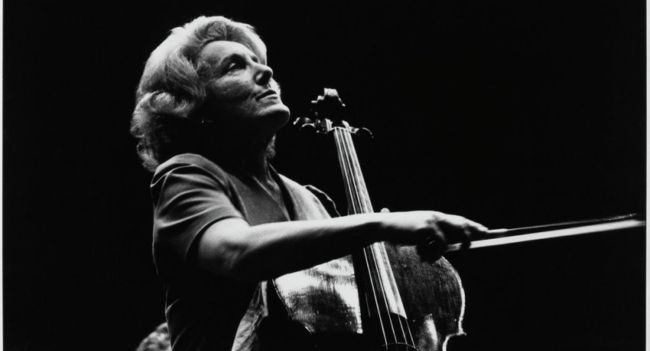
She played regularly with the greatest American and European orchestras. Steinberg hired her annually as soloist. She made a triumphant 1966 tour of the Soviet Union, the first American cellist to play there. (She’d taken US citizenship in 1955.) She gave the Hindemith and Shostakovich sonatas their British premieres, performed the Walton Concerto with Walton conducting, and made the first recording of the Barber Concerto, Barber conducting. Her biggest fan among composers, though, was Ernest Bloch, who went so far as to say “Zara Nelsova is my music.” It was at Nelsova’s urging that Bloch wrote his Cello Suites, and she recorded Schelomo under his baton. He even gave her a photo inscribed “to Madame Schelomo.”
A perusal of Nelsova’s essential recordings, then, can only begin with with Schelomo. Interestingly, Nelsova’s own favored recording was not the one with Bloch, but a subsequent outing with Ansermet and the London Philharmonic: a gloriously expressive and spontaneous performance. Still more moving is her rendition of Bloch’s From Jewish Life, throbbingly painful in its cantorial and Klezmer inflections.
Journeying backward from Bloch to Bach shows Nelsova’s stylistic flexibility: she recorded three of the solo Suites with winning simplicity and naturalness, operating at a notably lower level of tonal intensity. The tone comes roaring back for the Dvořák Concerto, which she recorded three times. The last version, with Susskind and the St. Louis Symphony, is straightforward and satisfying music-making, extraordinary in its clarity, and played with that beautiful sound, so robust here that you can practically grasp it with your hands. Another gem is the Lalo Concerto, with Boult and the London Philharmonic, simmering with piquancy and romantic temperament.
Nelsova was married for ten years to pianist Grant Johannesen. The two made a wonderful sonata team: their recordings of the Chopin and Brahms E Minor are perfectly unified at the deepest level of detail, and Nelsova’s playing pulsates with life, vividly capturing the colors of Chopin’s poetry and Brahms’ defiant sorrow.
One example of her chamber playing is also captured on record: Beethoven’s “Ghost Trio,” played at the 1954 Stratford Festival with pianist Glenn Gould and violinist Sasha Schneider. This performance was preceded by a contentious rehearsal process, pitting the twenty-two-year-old pianist against his older string colleagues. As interpretive disagreements mounted, Schneider asked Gould how many times he’d performed the piece. The answer turned out to be zero. Said Schneider: “I’ve done it four or five hundred times.” To which Gould replied: “My position has always been that quality is more important than quantity.” Eventually, Nelsova played tiebreaker. However they got there, the end product—thrillingly energetic, beautifully subtle, and stunningly precise—is as fine a chamber recording as you could wish to hear.

